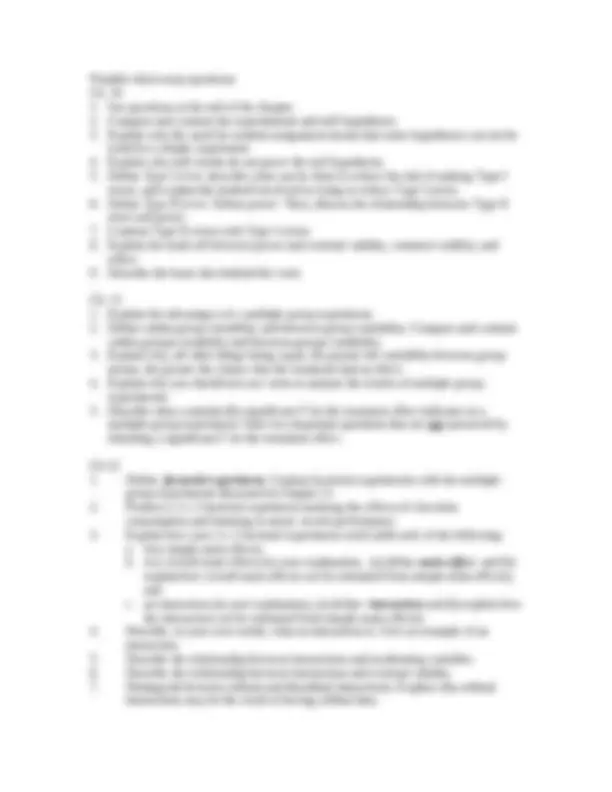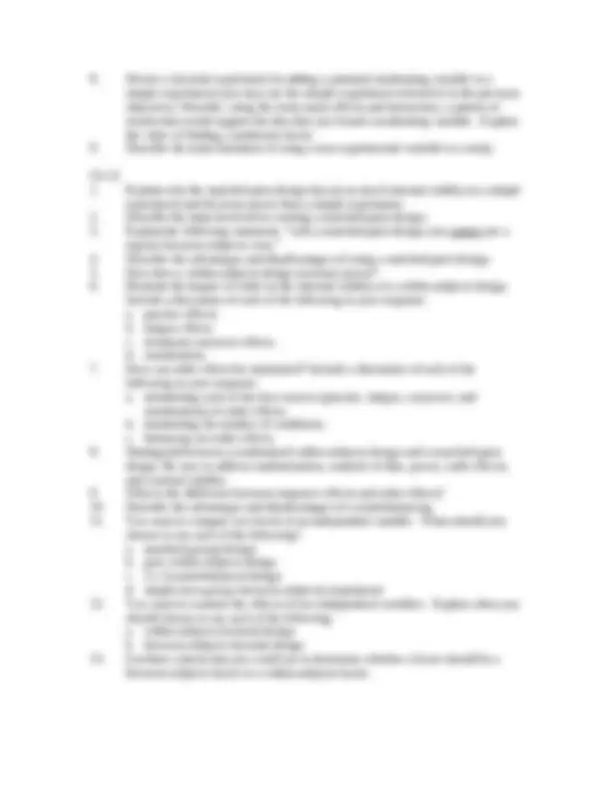





Study with the several resources on Docsity

Earn points by helping other students or get them with a premium plan


Prepare for your exams
Study with the several resources on Docsity

Earn points to download
Earn points by helping other students or get them with a premium plan
Community
Ask the community for help and clear up your study doubts
Discover the best universities in your country according to Docsity users
Free resources
Download our free guides on studying techniques, anxiety management strategies, and thesis advice from Docsity tutors
The content of exam 3 for psyc 4703's experimental psychology course, focusing on chapters 10-13. Topics include designing well-controlled experiments, expanding experimental designs, analyzing data using anova and t-tests, and using factorial designs. Students are expected to understand concepts such as random assignment, power, and interactions.
Typology: Exams
1 / 5

This page cannot be seen from the preview
Don't miss anything!




PSYC 4703: Experimental Exam 3 – Chapters 10- Content Map Ch 10 Experimental Research: The simple experiment 3 properties of well-designed experiments Vary at least one IV Levels of IV Experimental and control groups Assessing manipulation of IV Pilot test Manipulation check Power Equivalent groups Random assignment Conflicts between power and other research goals Control Systematic variance Treatment variance Confound variance Analyzing Experimental Data Random error Hypothesis testing Null hypothesis Experimental hypothesis Type 1 error Type 2 error Beta Alpha t- test: is the difference between groups larger than would be expected by chance alone? Ch 11 Expanding the simple experiment Advantages of using more than 2 values of an IV More than 2 kinds of treatment Increasing external validity Improving Construct validity Analyzing Data from multi-group experiments ANOVA: basic logic Within groups variability Between groups variability Why not a series of t-tests? Reading an ANOVA summary table Degrees of Freedom F value
Ch 12 Factorial Designs Benefits of factorial designs Information yielded by factorial design Simple main effects Overall main effects Interaction effects How to calculate different effects Interactions and moderating variables Potential results of a factorial experiment Analyzing results Degrees of freedom F value Interpreting main effects Interpreting interactions Hybrid designs – studying non-experimental factors Limitation Reasons to use Ch 13 Matched pairs design Procedure Considerations Effective matching variable Power & the dependent groups t-test External validity Construct validity Data analysis: dependent groups t-test Repeated measures designs Considerations Power Order effects Practice Fatigue Carry-over Sensitization Randomized within subjects design Procedure Analysis of data Counterbalanced within-subjects design Advantages and disadvantages Procedure Analysis Mixed design Choosing the right design (table 13-11) One IV More than one IV
Possible short essay questions Ch. 10